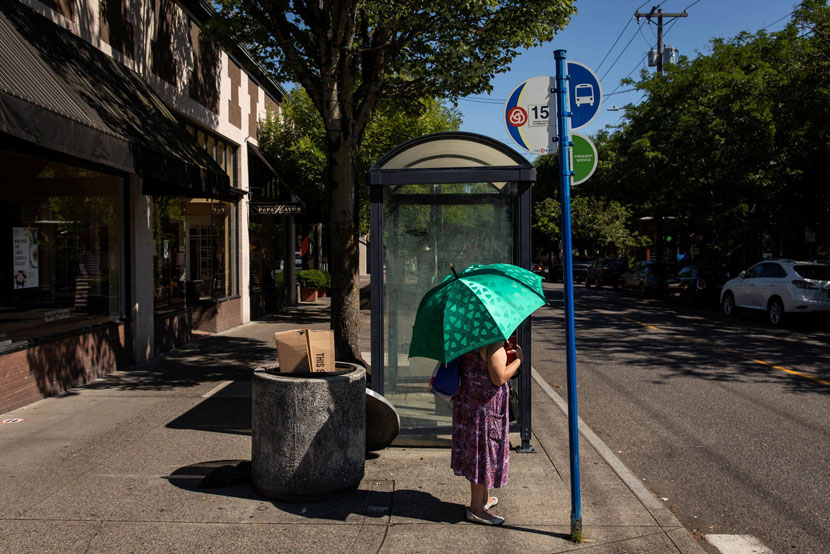Saturday, July 30, 2022

Extreme heat is suspected in at least four deaths in Oregon as the Pacific Northwest continues to bake Friday in a prolonged heat wave, which has exceeded triple digits in many parts of the region.
The Multnomah County medical examiner is investigating whether heat played a role in three deaths in Portland, according to an agency news release.
A fourth possible heat-related death was reported in Umatilla County, on the state’s east side, according to Oregon Public Broadcasting.
Portland reached 102 degrees Fahrenheit on Tuesday, setting a new daily record for July 26. Seattle broke its daily record the same day, rising to 94 degrees.
Parts of the inland Northwest, which are more accustomed to searing temperatures, neared 110 degrees at times this week.
The heat wave, which forecasters expect to continue into the weekend, was a reminder of the risks that extreme heat poses in the Pacific Northwest, where people west of the Cascade mountains are poorly adapted for extreme heat and natural systems are vulnerable to soaring temperatures.
While damaging, the impacts of the heat wave remained less significant through Friday compared to the heat dome last year, which stunned the Pacific Northwest as temperatures in some places soared five degrees or more past all-time highs.
Seattle temperatures crested at 108 degrees, and Portland hit 116. Hundreds died.
Temperatures this year were not expected to reach such dangerous levels, and local governments had spent the cooler months preparing for impacts — with some evidence that the new planning, while incomplete, was paying off.
June 2021’s heat wave was “virtually impossible,” according to some experts, if not for the impacts of climate change.
Searing temperatures crumbled streets in Seattle, caused baby birds to jump to their deaths across the region, killed millions of sea creatures along the coastline and cost Washington state about one-fifth of its cherry crop.
This year, cool spring weather, which helped build a hearty mountain snowpack, buffered some of the recent heat, and officials said they were better prepared after hard lessons last year.
The 2021 heat wave served as a wake-up call for the Northwest, where many households don’t have air conditioning. Many cities, including Seattle, didn’t have specific action plans for heat waves.
The city has since generated a draft report of recommendations following the 2021 heat wave and is working to finalize a new heat action plan, according to Lucia Schmit, an emergency planning coordinator with the city of Seattle.
Schmit said recommendations were in action already. City workers delivered air conditioning units to senior centers that lacked cooling last week.
The regional homelessness authority set up cooling at homeless encampments. Coordination for the heat response began several days earlier than it did last year, Schmit said.
King County, which includes Seattle and its suburbs, is developing a heat mitigation strategy also. Portland started a program to provide cooling heat-pump devices for low-income residents.
Washington state’s workplace safety regulator rolled out new emergency heat rules in an attempt to better protect outdoor workers. Oregon in May introduced new permanent rules.
This year, state and local public health agencies fired off a flurry of heat messages many days before the temperatures spiked.
Last summer, 157 deaths from heat-related illnesses were reported in Washington state; most were recorded during the three-day heat wave that June.
Nearly 100 deaths were reported in Oregon during the heat wave. The true toll is likely higher, as heat often exacerbates concerns like heart or kidney conditions but isn’t implicated directly in official death data.
The 2021 heat dome wrought disastrous environmental effects. Shellfish were exposed by low tides that came during the hottest times of the day, leaving the creatures to steam onshore to their deaths.
Some fish die-offs were reported in overheated streams. Intense temperatures sunburned cherries, forcing some growers to abandon their crop altogether.
This year’s heat wave was primed for less dire impacts.
Tags: heatwave, pacific northwest
Wednesday, April 24, 2024
Wednesday, April 24, 2024
Wednesday, April 24, 2024
Wednesday, April 24, 2024
Wednesday, April 24, 2024